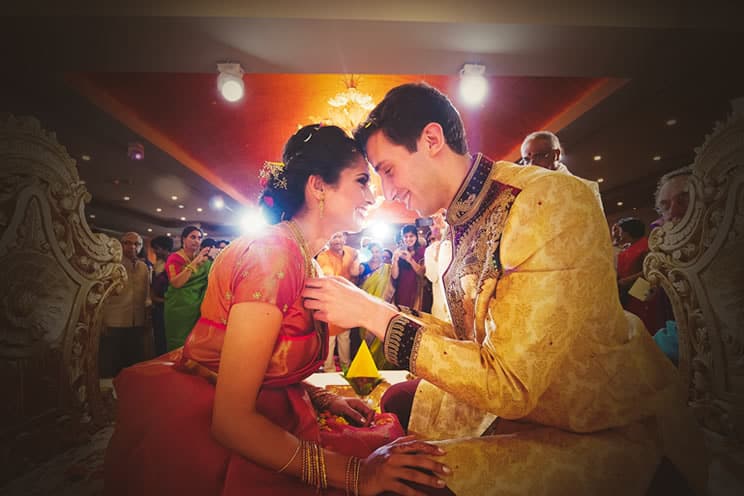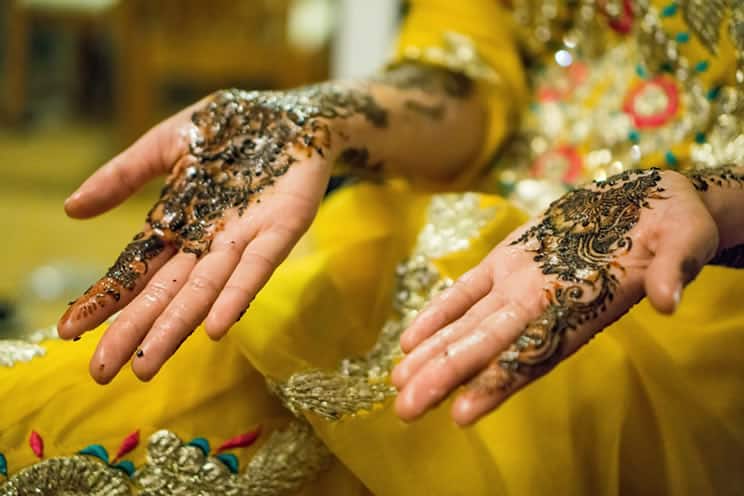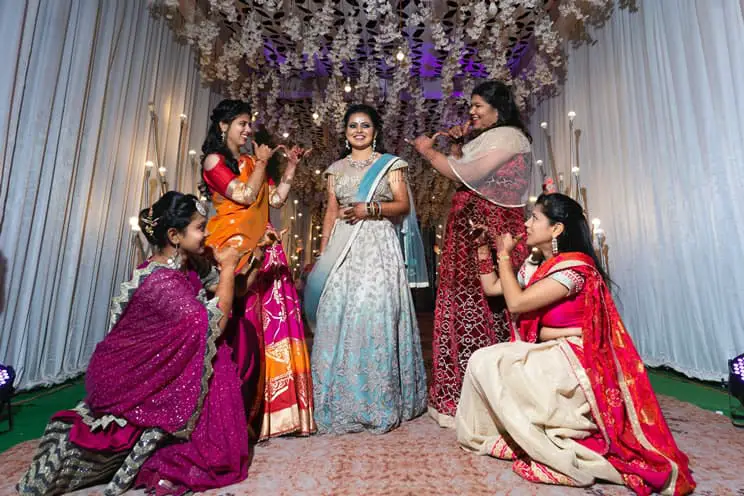
All religions have their own unique traditions and rituals for monumental parts of life, especially when it comes to weddings. Religions that may hold similar belief systems may also have drastically different wedding rituals. Despite Jainism and Hinduism being major religions in India with some shared ideas, their wedding traditions are different.
The biggest difference between Jain and Hindu weddings is that they are based on two different religions, which means that their intents are different. Although the wedding traditions and processes of the two religions are similar, there are important differences in the manner a marriage is done.
Even Jain weddings vary based on the sect of Jainism that is practiced; the same is true for Hindu weddings. However, different Jain sects will still have weddings more similar to each other than to Hindu weddings. Each religion has elaborate wedding traditions, and the key differences are in these rituals.
Jain Wedding Rituals
Jainism is a prominent religion in India, a country that holds elaborate wedding traditions across all its religions. As such, Jain weddings consist of complex, intricate rituals that hold deep meaning to those involved.
Jain wedding traditions consist of more than just a ceremony’s rituals. There are distinct traditions for before the marriage ceremony, during the ceremony, and once the couple is officially married.
Jain Pre-Wedding Rituals
The first pre-wedding tradition in Jainism is Khol Barana, which is accompanied by Tikka. In this ritual, an alliance is established that ties the bride and groom together. The groom’s family brings the bride’s family a silver platter with a coconut and a sum of money. This is Khol Barana, which is followed by the bride’s family, bringing gifts to the groom’s house in Tikka.
Next is Laghana Lekhan, a ritual in which there is a small worship gathering at the bride’s home with close friends and family. A religious official decides on the date and time of the wedding. The date and time are precise. In Lagna Patrika Vachan, the precise date and time of the wedding are drafted in a formal letter read by the groom’s family.
The Jain engagement ceremony is the Sagai. In this tradition, the upcoming wedding is announced through a tilak ceremony. Rings are not exchanged, but the bride’s family exchanges gifts with the groom’s family.

A common tradition for Indian weddings is the Mehndi ceremony, which Jain weddings also include. The women in the family apply mehndi designs in henna to the bride. This is followed by Bana Betai where the bride and groom are anointed with chickpea paste before a ritualistic bath. Most Indian religions that have this ritual use turmeric paste instead of chickpea paste.
Jain Wedding Rituals
Important traditions continue on the day of a Jain wedding. The Pandit (religious official) sanctifies the place where the wedding will occur in Mada Mandap. This is followed by Ghudchadi, which is the beginning of the groom’s procession. The groom’s mother gives him his headgear and his relatives apply tika to his forehead. He then rides a horse to a temple to ask for blessings.
The bride’s family welcomes the groom’s procession in Barati. The groom and the bride’s brother exchange coconuts, and the bride’s brother also gives other gifts of welcome to the groom. The bride’s mother and other married women in her family sing a traditional hymn to welcome the groom.
In Kanyavaran, the bride’s parents present her to the groom with a declaration of their daughter’s marriage. The parents place a rupee and a quarter in the bride’s right hand with some rice before the groom takes her hand. A married woman in the family knots the clothes of the bride and groom together in Granthi Bandhan.
The next step in a Jain wedding is the Pheras. This process is common to all Indian weddings as it is the official way of joining in marriage. The Jain version of the Pheras is the same as that of Hindus. It involves circling a fire and taking vows.
In Ashirvada, the newly married couple asks for blessings from the elders of both families. The wedding ceremony ends with Bidaai, which is where the bride’s family bids her goodbye.
Jain Post-Wedding Rituals
The bride is welcomed by the groom’s family upon her arrival at the groom’s house in Sva Graha Aagamana before the couple, and their families go to a Jain temple to distribute alms to the poor in Jina Grahe Dhan Arpana.
A wedding reception is then held by the groom’s family a day or two after the wedding ceremony. The couple seeks blessings from friends and family at the reception.
Hindu Wedding Rituals
Many of the traditions that are present in Jain weddings also occur in Hindu weddings because they are tied to Indian culture just as much as they are to religion. That being said, there are also distinct differences that distinguish Hindu from Jain wedding traditions.
Hindu Pre-Wedding Rituals
In the Tilak ceremony, the bride’s father commits the couple to the journey of marriage by applying tilak (which is a red powder) to the bride’s forehead. This is followed by the engagement ceremony Sagaai, where the couple exchanges gold and diamond rings while asking for their families’ blessings.
One of the Hindu pre-wedding rituals that distinguishes it from a Jain wedding the most is the Sangeet. In this ceremony, the bride is joined by her female family members and friends for a celebration. The married women sing folk songs, and the unmarried women dance and sing modern hits.

The Hindu wedding process includes a similar tradition to the Jain Bana Betai, but it is called Haldi. In this ritual, the bride’s loved ones anoint her with turmeric paste. This is followed by the Mehndi ritual of henna designs being applied to the bride’s hands and feet.
In Kalire, the bride’s uncle brings her a set of bangles on the day of the wedding as a symbol of well-wishes.
Hindu Wedding Rituals
The groom arrives in Vara Satkaarah to a welcome from the bride’s mother. The groom is then received at the altar and given gifts by the bride’s father in Madhuparka. The bride’s father gives her away while sacred mantras are chanted in Kanya Dan.
A sacred fire is circled by the bride and groom as they take solemn vows. The couple goes through the Pheras, offers food to the fire in Anna Praashan, and seek blessings from the family elders in Aashirvadah.
Hindu Post-Wedding Rituals
The newly married couple attends the reception with loved ones. The reception may be the same day as the wedding ceremony, or it may be held in the following days. It is usually a celebratory party with the couple’s friends and family.
Comparing Hindu and Jain Wedding Rituals
Ultimately, Hindu and Jain weddings have similarities in overall concepts, but they vary greatly in small details of their respective traditions. In both religions, a wedding is an important family event that involves many loved ones.
Many of the differences start to appear in the pre-wedding rituals, such as the Jain tradition of an engagement consisting of a formal letter instead of the Hindu ritual of exchanging rings. The Jain tradition of the bride and groom being anointed with chickpea paste also differs from the similar Hindu practice with turmeric paste.
Most of the differences between Jain and Hindu weddings exist because they are two different religions that have different belief systems. At the same time, most of the similarities exist because both religions are prominent in Indian culture.
